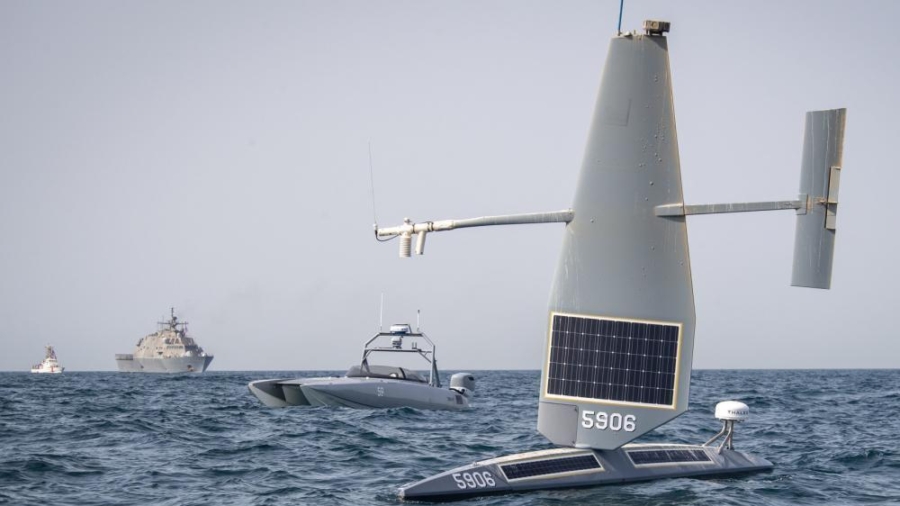The U.S. Navy is preparing to begin new underwater trials for a large submarine drone “very soon.”
The Navy has been developing the so-called Orca Extra Large Unmanned Undersea Vehicle (XLUUV), in conjunction with Boeing, an aerospace and defense technology company. The drone submarine project is being managed by the Navy’s Unmanned Maritime Systems (PMS 406) program.
On Monday, PMS 406 principal assistant program manager Rob Iera announced that the Orca XLUUV is currently undergoing a series of land-based system tests, National Defense magazine first reported. Iera said his office expects the submarine drone will be “in the water for full systems testing very soon.”
An exact timeline for the underwater tests is unclear. Iera announced the testing developments ahead of the American Society of Naval Engineers’ Technology, Systems and Ships Symposium, which began on Tuesday.
Iera’s announcement that the Orca XLUUV will soon begin underwater testing comes as the project is over budget and behind schedule. The Government Accountability Office (GAO) published a report in September, finding the Orca XLUUV to be $242 million over budget and more than three years behind schedule.
The Navy has been pursuing this XLUUV project since 2016. In September of 2017, the service awarded phase one contracts to Lockheed Martin and Boeing to develop competing designs for the unmanned undersea vehicle.
Boeing won a phase two contract to build, test, and deliver the XLUUV in February 2019. The Boeing design is based on its existing Echo Voyager unmanned underwater vehicle design. Boeing has teamed up with Huntington Ingalls Industries to develop unmanned underwater vehicles for the Navy.
The Boeing team has conducted some prior rounds of testing at sea on the Echo Voyager.
NTD News reached out to Boeing and the Navy for comment, but neither responded by press time.
XLUUV’s Mission
The Navy wants the XLUUV to be able to operate at sea for lengthy periods of time and lay underwater mines.
In its initial request for proposals (RFP) for the Orca XLUUV project, the Navy requested details about the lenghth of time proposed designs would be able to operate autonomously at sea. The RFP also required that the underwater vehicles have an internal payload module specifically for “Clandestine Delivered Mine (CDM)” allowing the submarine drone to discretely lay mines at sea.
The Navy’s RFP for the Orca XLUUV calls for a modular design with an open architecture, to allow it to be reconfigured for additional missions. Naval Technology reported the submarine drone could take on anti-surface warfare, anti-submarine, electronic warfare, and other strike missions in the future.
Boeing’s Echo Voyager design boasts a range of about 6,500 nautical miles (7,480 miles), which would allow it to potentially operate for months at a time. The design features a hybrid battery and marine diesel generator power system. The underwater vehicle would also feature a payload compartment of up to 34-feet in length, providing it with 2,000 cubic feet of internal volume.
The Navy is developing new submarine and unmanned surface and underwater vehicle fleets at a time when China is expanding its military presence in the Indo-Pacific region.
Undersea warfare is one domain where the U.S. Navy maintains a competitive advantage over China. According to a September Pentagon report to Congress on China’s military capabilities, the Chinese Navy is “improving its antisubmarine warfare (ASW) capabilities through the development of its surface combatants and special mission aircraft, but it continues to lack a robust deep-water ASW capability.”
Where China still lacks robust deep-water capabilities to counter its enemy’s submarines, the United States and its allies are working together to strengthen their submarine fleets.
In September 2021, President Joe Biden announced a new security pact between the United States, the United Kingdom, and Australia called AUKUS, and revealed that the security pact will increase security in the Indo-Pacific region.

